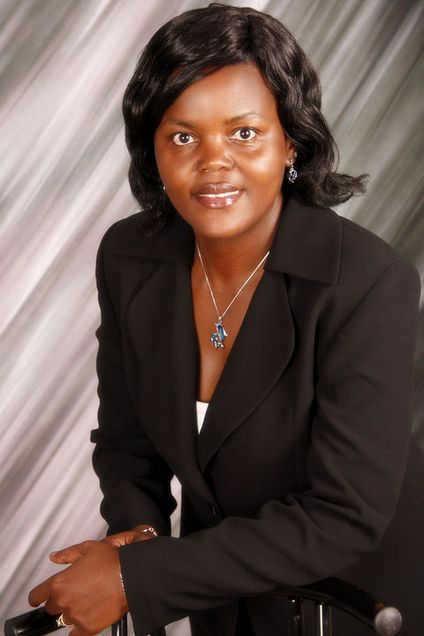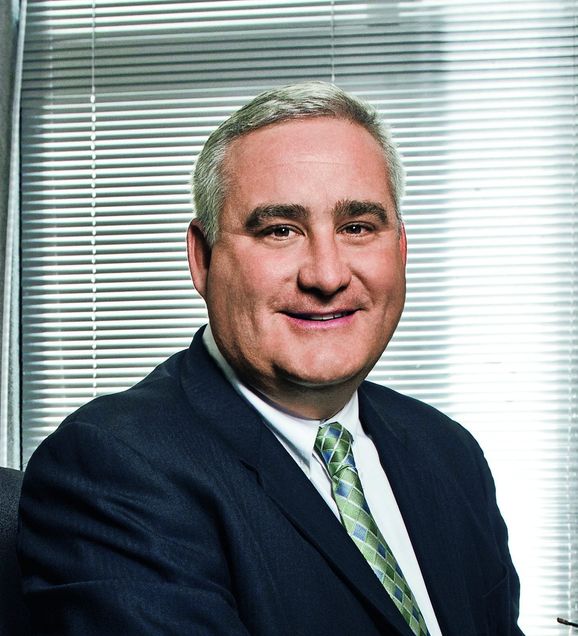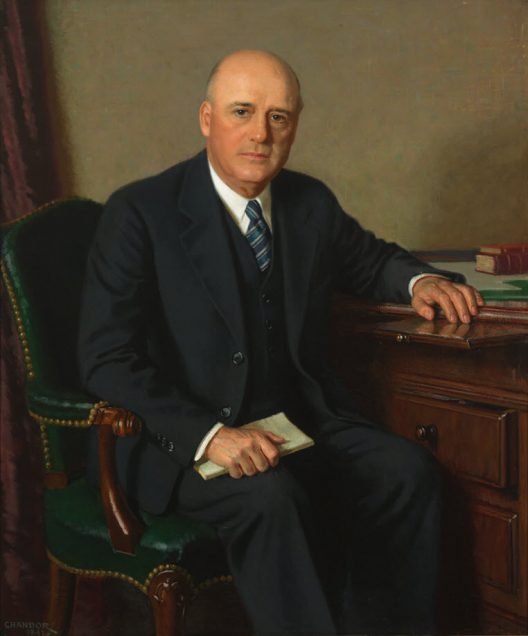Tagged: Sean J. Kealy
Who Will Save the Africa Parliamentary Knowledge Network? by Elizabeth Bakibinga-Gaswaga
The bright promise that was the Africa Parliamentary Knowledge Network (APKN) is seemingly fading away. This important project, where African parliamentarians and their staff committed to help each other build capacity and share information was making a real difference in the governance of Africa. Sadly, when the United Nation’s Department of Economic and Social Advancement (UN/DESA), using funds provided by the government of Italy, stopped supporting the APKN financially a few years ago, the Network not only lost momentum, but seemingly stopped altogether. Just because the Network has been quiet, and perhaps has frayed from lack of use (the Network’s website, APKN.org, is now a Japanese fashion page) does not mean that it is lost. The talented and dedicated people from the various parliaments who made the APKN so promising should take the lead and chart a new course for the Network. This will take participation from across the Continent and should be driven by African voices. This effort will also take money. It is unlikely the UN will be a source– but perhaps between the APKN members and the partners who have already shown a willingness to support the Network, we can find a new vision and the money to make that vision a reality. For instance, the Commonwealth Parliamentary Association is a potential partner. This conversation could start at the Commonwealth Association of Legislative Counsel (CALC) conference that will take place in Livingstone, Zambia April 1-3, 2019.
 The APKN was established in June 2008 by the international conference “Africa Parliamentary Knowledge Network – Building Together Open and Learning Parliaments in Africa” in Cairo, Egypt. The APKN operated under the authority of the Speakers and Presidents of APKN member assemblies–30 assemblies in all. Representatives of the APKN assemblies met in plenary every two years to approve the reports of activities, the Executive Committee’s strategic action plan, and to set new priorities and goals for the next two years. The Network was “hosted” by a variety of Parliaments who took the lead in putting together conferences and led the Executive Committee. The first host was Egypt, before the turmoil and revolution in that country. The next host was South Africa, and finally the Pan-African Parliament took the lead.
The APKN was established in June 2008 by the international conference “Africa Parliamentary Knowledge Network – Building Together Open and Learning Parliaments in Africa” in Cairo, Egypt. The APKN operated under the authority of the Speakers and Presidents of APKN member assemblies–30 assemblies in all. Representatives of the APKN assemblies met in plenary every two years to approve the reports of activities, the Executive Committee’s strategic action plan, and to set new priorities and goals for the next two years. The Network was “hosted” by a variety of Parliaments who took the lead in putting together conferences and led the Executive Committee. The first host was Egypt, before the turmoil and revolution in that country. The next host was South Africa, and finally the Pan-African Parliament took the lead.
During its short life, the APKN had a string of successes; thanks in large part to the tireless work of the UN/DESA technical advisors, Flavio Zeni and Dr. Cecilia Matanga. The APKN issued a comprehensive set of legislative drafting guidelines for use across the Continent to allow better informatics sharing while remaining true to best practices in legislative drafting. An assembly of drafters from APKN countries refined and ratified the Guidelines at a 2010 conference in Cape Town South Africa. In 2011, UN/DESA, in conjunction with the APKN issued a handbook on designing legislation for the free use of drafters everywhere.
Perhaps the greatest victory is that earlier this year the legislative platform designed for APKN, Akoma Ntoso V1.0 became the newest Organization for the Advancement of Structured Information Standards (OASIS) Standard— the only OASIS standard with an African name (“linked hearts” in the Akan language of West Africa) to honor those who nurtured and promoted the platform. This platform is used by many institutions around the world — the European Parliament, European Commission, the Italian and Swiss parliaments, and other parliaments in both America and Asia. Still, no African parliament has adopted Akoma Ntoso platform —perhaps because of the missing APKN.
APKN served other important functions: one was simply bringing African legislators and drafters together to meet, talk and exchange ideas at periodic conferences. In addition, the APKN LawClinics had law students at Boston University School of Law drafting legislation with African drafters and law students at African universities for parliaments in Uganda, Zambia, Liberia and the East African Legislative Assembly.
Where do we go now? At a conference in 2011, when participants asked what APKN would do next, Flavio Zeni responded, “You are APKN!” The Network was never meant to be driven by the UN or an outside partner such as a European parliament or American university. African parliamentarians and African drafters must lead the Network and give it vitality.
Should there be a website to share legislative ideas and language like the United States’ National Council of State Legislatures? Should the Network train legislative drafters? Should it train new members of parliament? Should it take position on and suggest methods for legislative reform? Should there be an annual conference, and what would be the goals of that conference?
We will send this posting to the various African parliamentary leaders, those who have been active with the APKN in the past, and to the CALC community at large. If anyone who would like to make suggestions, on either a vision for APKN or a source of funding, we will post the ideas on BU Law’s Dome blog webpage. Our hope is that we can bring several potential suggestions to the CALC conference in April for discussion amongst drafters from APKN countries and their allies. Together, we can reinvigorate APKN and support stronger parliaments across Africa.
 Elizabeth Bakibinga-Gaswaga was involved in AKPN as a legislative counsel for the Parliament of Uganda and is an active member of CALC. Elizabeth represented Africa on the CALC Executive Council and later served as CALC’s Vice President.
Elizabeth Bakibinga-Gaswaga was involved in AKPN as a legislative counsel for the Parliament of Uganda and is an active member of CALC. Elizabeth represented Africa on the CALC Executive Council and later served as CALC’s Vice President.
 Sean J. Kealy is a clinical associate professor of law at Boston University School of Law where he directs the legislative clinical programs. Sean helped organize the APKN LawClinics and is an associate member of CALC
Sean J. Kealy is a clinical associate professor of law at Boston University School of Law where he directs the legislative clinical programs. Sean helped organize the APKN LawClinics and is an associate member of CALC
Some Unsolicited Advice To Nancy Pelosi (and Those Who Would Replace Her)
If the “Blue Wave” materializes next week, as so many predict, you Madame Leader, will become Speaker of the House once again. Time marches on, and as many have already pointed out, you and the rest of the top Democratic House leaders are all closing in on 80 years old. This situation was made even worse by the loss of Democratic Caucus Chair Rep. Joseph Crowley (D-NY); a relatively young 55 years old, to a primary challenge. There is already a movement by younger members of the Democratic Caucus for a change in leadership, but you and the other leaders do not seem to be going anywhere. It is time, however, for you—and the rest of Congress— to take a hard look at how the House is run. I would argue that when Congress worked—during the second half of the 20th Century— younger potential leaders were groomed for the difficult office of Speaker. It is time to return to that practice.
The House of Representatives was most effective during the so-called “Austin-Boston Connection” that dominated the House for 55 years; from 1940 until 1995. During nearly all of this time—from the Depression until Bill Clinton’s “bridge to the 21st Century,” the Democrats held a majority in the House. The House consistently passed needed legislation, effectively used its oversight powers and worked with presidents of both parties; not because of sheer numbers or ideological purity—far from it. Rather, the House worked, in large part, because leadership routinely identified and trained future majority leaders and speakers. After years of apprenticeship, new speakers understood both how to use the levers of power and how to deal with the opposing party.
When the great Sam Rayburn first became speaker in 1940, he had not only been the majority leader for nearly four years, he had been the speaker of the Texas House for two years—starting at the age of 29. When he re-took the speakership for the last time in 1955, he had over 10 years previous experience as speaker and 4 more years as minority leader. When John McCormack became speaker (1962-1971), he had been the Majority Leader for 18 years.
Carl Albert (1971-1977) was majority whip for seven years and majority leader for nine years before taking the gavel. Tip O’Neill came to Congress after serving four years as the Massachusetts House Speaker, then served two years as majority whip and four more years as majority leader. O’Neill’s 10 year speakership (1977-1987) became the example for a House that ideologically opposed— but worked with—a president of the same, and then another, party. Jim Wright was majority leader for 10 years before his two year speakership (1987-1989) When Tom Foley (1989-1995) became speaker, he had been majority whip for six years and majority leader for two and a half years. Every one of these speakers came to office trained not just how to lead their own caucus, but how to reach across the aisle and create the majorities needed to pass complicated and controversial legislation.
Compare that to the level of preparation for leadership since then. Newt Gingrich (1995-1999) had only five years of experience as minority whip. Dennis Hastert (1999-2007) was relatively well-trained with four years as majority whip. You, Madame Leader, (2007-2011) were minority whip for only one year. John Boehner (2011-2015) was majority leader for one year, minority leader for four years and a committee chairman for five years. Paul Ryan (2015-2019) was just a committee chairman for five years before being drafted to be speaker.
From 1995 until now—half of the time the Austin-Boston era, we have had five speakers who had a combined five years of prior experience running the House as either the majority whip or leader. How did we get here? Frankly, the Democratic leadership has stagnated and grown old. The Republicans seem to prefer whoever will apply the Hastert Rule, to the exclusion of working with Democrats, giving outsized influence to a fringe caucus.
And what have we had since 1995? Gridlock, government shutdowns, speakers held hostage by small minorities within their own caucus. The difference in productivity is stunning. From 1973-2015, nine of the ten most productive Congresses were led by Albert, O’Neill, Wright, and Foley. The lone post Austin-Boston speaker is Hastert at #10 from 1999-2001. The least productive Congresses during that time were the two led by Boehner—2011-2015.
Some would blame this dysfunction on the rise of the Tea Party and the Freedom Caucus. Still, talented speakers have overcome even greater challenges: Speaker McCormack passed maybe the most significant law of the 20th Century, the Civil Rights Act of 1964 with 91 members of his caucus dead set against the bill. Now, when a few dozen members of the Freedom Caucus opposes a bill, it becomes impossible to pass. Others may say the problem is gerrymandering—but that has been a problem since the founding generation; and since the Supreme Court keeps avoiding the issue, it is not going away soon.
What does this history lesson have to say about the next Congress? This year it has become fashionable to run for Congress as a Democrat while running against you Rep. Pelosi by name. Gil Cisneros, who has received $2 million from the Democratic Party to run for the House, said he won’t be voting for you because, “new leadership is needed.” Tim Ryan (D-OH) got 63 votes in the last leadership vote and Rep. Seth Moulton (D-MA) has been openly critical of the current leadership. Rep. Linda Sanchez (D-CA) has also announced her candidacy for leadership. Perhaps this is good politics, but a new set of leaders with no experience is not in the best interest of either the Democratic Party or the House as an institution. None of these insurgents know what they are in for. If the House is to work—especially while dealing with the mess that is the Trump Administration— it needs a steady and experienced leader in charge.
To your credit, you have remained supportive of breakaway Democrats, “I’m OK. Just win baby. I think many of them are saying we need…new leadership, yeah I don’t take offense at that.” That is the right point of view for a House leader— and the Democrats are lucky to have a leader with four years of experience as speaker.
Still, you must look to the future now. Who will lead the House Democrats next? Are you training the next generation of leaders? Will they be practical, unifying politicians in the mold of the Austin-Boston era? I hear you plan to put a younger member in charge of the Caucus--and that is not enough. In the next session, you must entrust a new generation with the majority leader and whip positions and there are some terrific options:
Rep. Jim McGovern (D-MA) has mastered one of the most important levers of House power as ranking member of the Rules Committee. Rep. Diana DeGette (D-CO) immerses herself in complicated issues like stem cell research and gun control, and is already a deputy whip. Rep. Terri Sewell (D-AL) is another deputy whip with experience on the Intelligence Committee. Rep. Jim Himes (D-CT) is chair of the moderate New Democrats Coalition, a position Joe Crowley held before joining leadership. Any two of the four would bring new blood to leadership and be a bridge to the younger members.
If the House is to work again, we need you to train a new generation of leaders. It is time to bring back the leadership apprenticeships that worked so well during the productive Austin-Boston Connection.
 Sean J. Kealy is a Clinical Associate Professor of Law and the Director of Legislative Clinical Programs at Boston University School of Law.
Sean J. Kealy is a Clinical Associate Professor of Law and the Director of Legislative Clinical Programs at Boston University School of Law.


